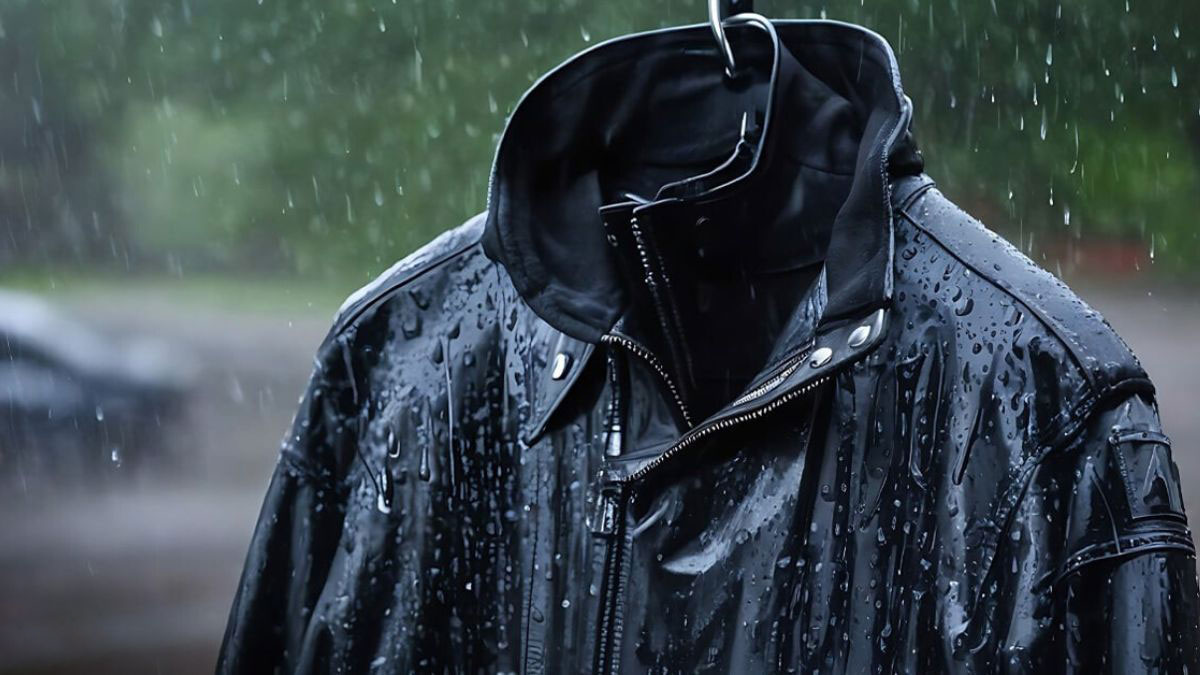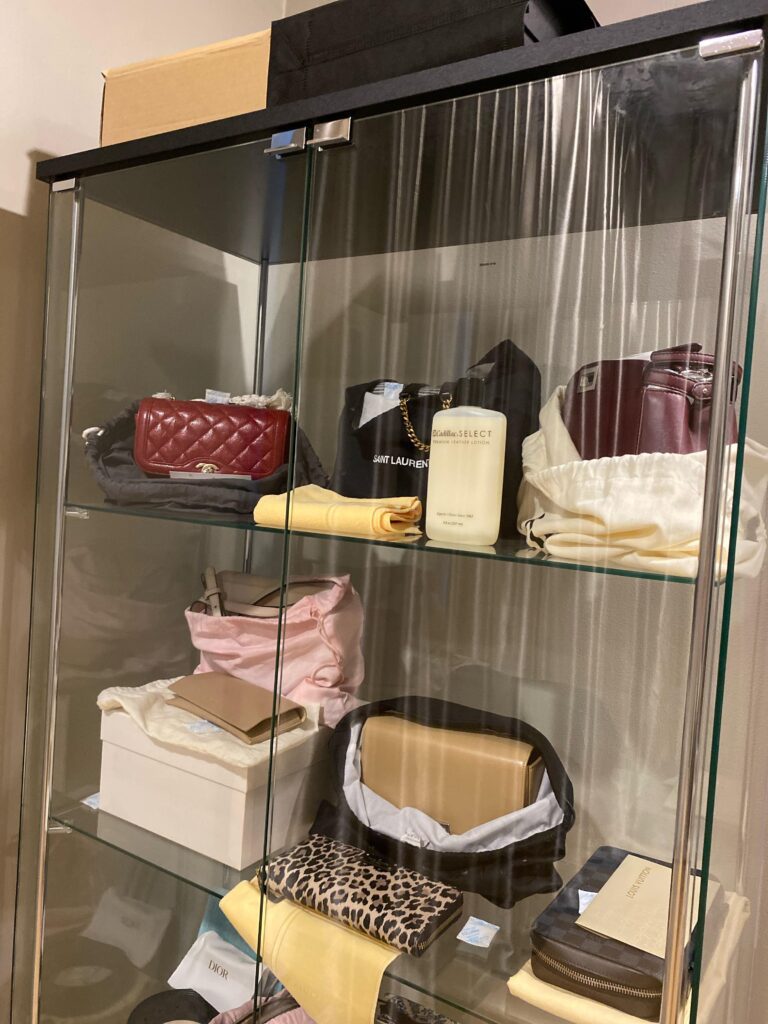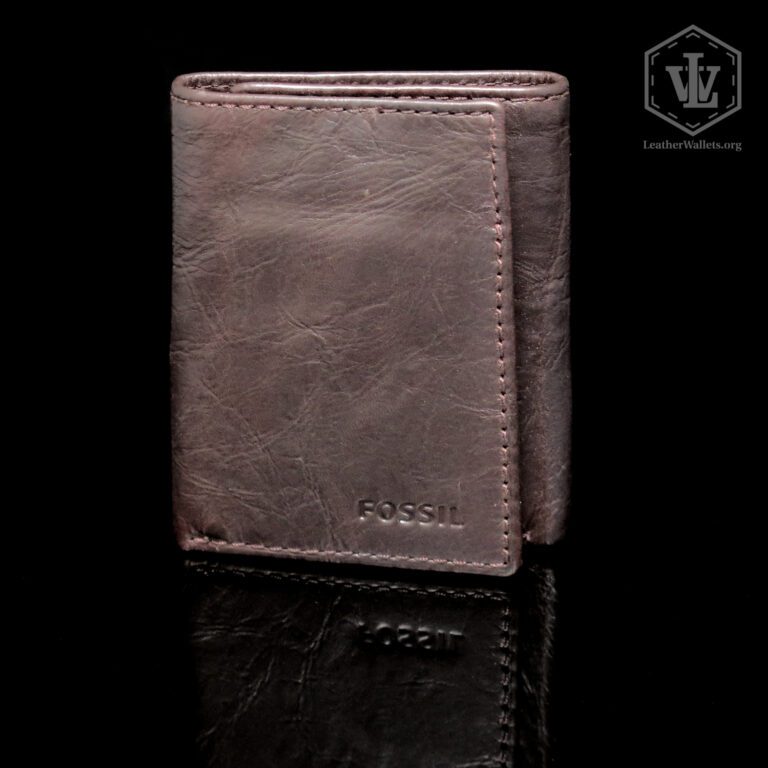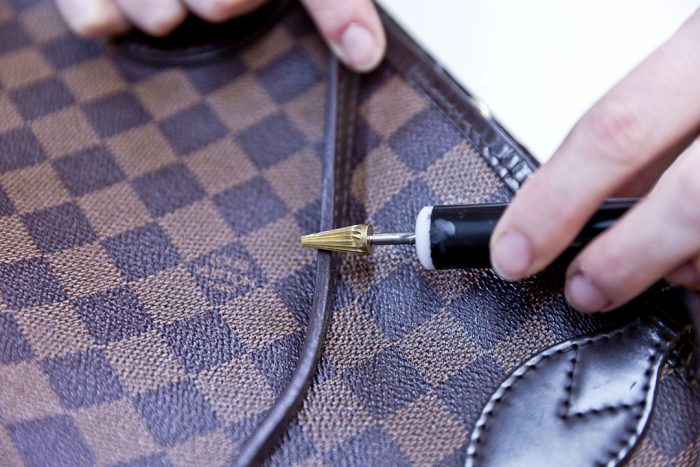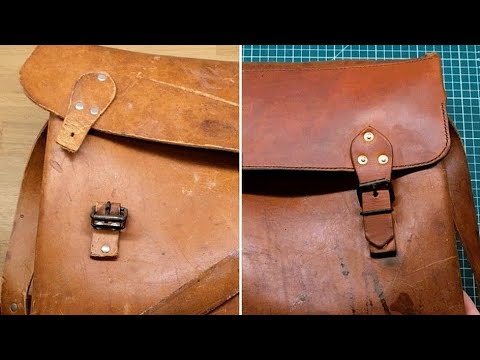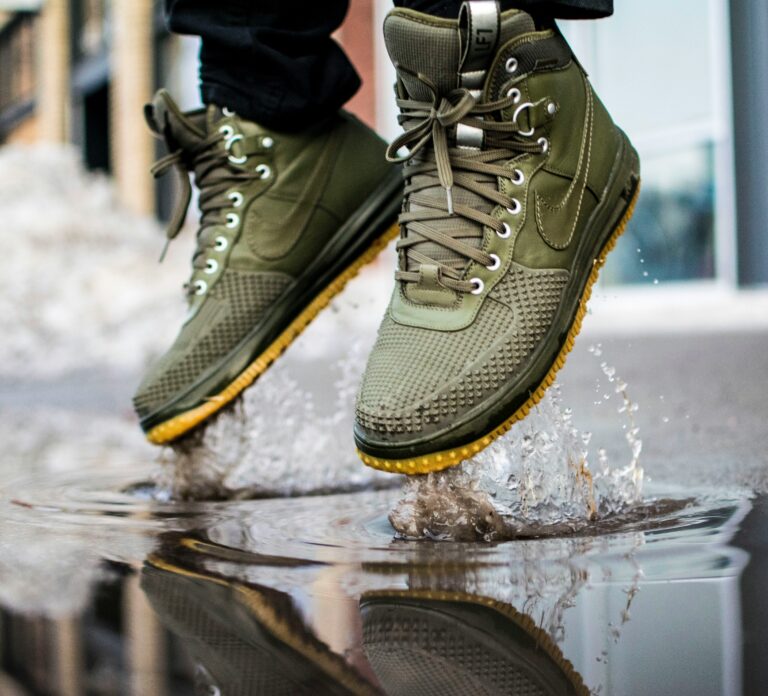Can You Wear a Leather Jacket in the Rain? Tips & Care
Leather jackets are synonymous with timeless style and effortless cool. From rebellious rockstars to chic fashionistas, these iconic garments have graced countless shoulders. But what happens when you’re caught in the rain? The thought of water meeting leather might make you cringe, but is it really a cause for concern?
You might be surprised to learn that wearing a leather jacket in the rain isn’t entirely off-limits. While a little drizzle won’t spell disaster, it’s crucial to take precautions to preserve your jacket’s sleek appearance and durability. Understanding how to care for your leather jacket can ensure it remains a staple in your wardrobe, rain or shine.
So, can you confidently step out in your leather jacket when the skies turn gray? Let’s explore the relationship between leather and rain, and discover how you can enjoy your stylish investment without compromising its integrity.
Key Takeaways
- Leather jackets can be worn in the rain if proper precautions and maintenance are practiced to preserve their quality and appearance.
- Different leather types offer varying levels of water resistance, with chrome-tanned leather providing better protection compared to vegetable-tanned leather, nubuck, and suede.
- To protect leather jackets from water damage, regular application of water-resistant products like leather lotions and sprays is advised, along with the use of umbrellas or raincoats during heavy rain.
- For jackets that get wet, air drying at room temperature and applying leather conditioner are crucial to maintain softness and prevent cracking or discoloration.
- Alternative outerwear options such as waterproof rain jackets or synthetic leather provide effective rain protection without compromising on style when leather is not ideal for wet conditions.
Can You Wear a Leather Jacket in the Rain?
Wearing a leather jacket in the rain is possible, but understanding its interaction with water is essential. Leather, a porous material, can absorb water, leading to potential damage such as discoloration, stiffening, or cracking. While natural leather isn’t inherently waterproof, some types are crafted to withstand moisture more effectively.
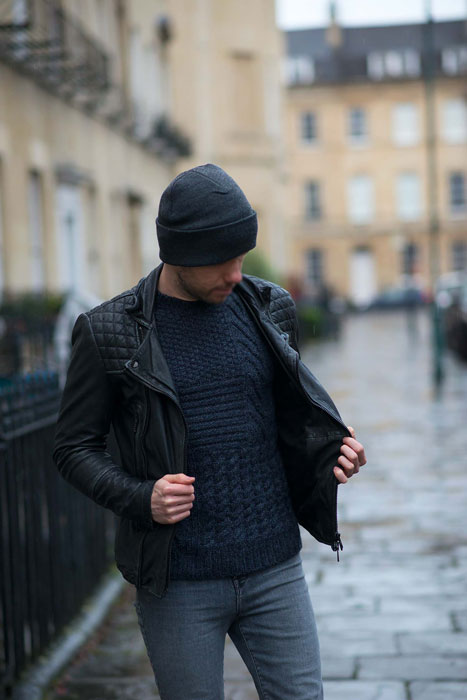
Leather Types and Rain Resistance
- Chrome-Tanned Leather: Offers greater water resistance due to the tanning process, making it suitable for light rain.
- Vegetable-Tanned and Aniline Leather: More sensitive to moisture. They can develop water stains if exposed to rain without protection.
Protection Methods
- Water-Resistant Products: Applying a water-resistant leather lotion, wax, or oil creates a protective barrier. Regular treatment helps maintain the jacket’s durability against rain.
- Additional Layers: Use an umbrella or lightweight raincoat to shield the leather from heavy rain.
Drying and Conditioning
- Drying: After exposure, gently wipe the jacket with a clean cloth. Let it air dry naturally at room temperature. Avoid heat sources, which can stiffen the leather.
- Conditioning: Regularly apply a quality leather conditioner to retain the jacket’s softness and enhance its water resistance.
- Wear your leather jacket during drizzle or light rain but avoid heavy downpours to preserve its quality.
- Use protective coverings like umbrellas to minimize exposure.
- Regularly maintain your jacket with appropriate leather care products to ensure longevity and appearance.
Understanding these principles allows you to enjoy your leather jacket even in rainy conditions, taking care of it to retain its iconic style.
Types of Leather and Their Water Resistance
Understanding the types of leather and their water resistance is essential if you wear a leather jacket in the rain. Different leathers have unique properties affecting how they handle moisture.
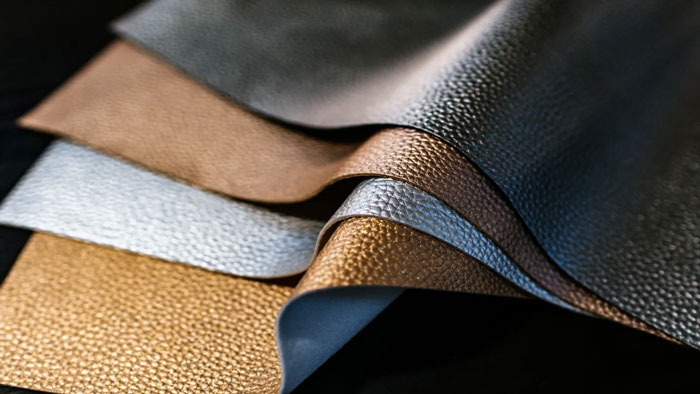
Full Grain Leather
Full grain leather retains natural fibers from the uppermost hide layer, making it the most durable and water-resistant. It has not been sanded or buffed, preserving its original texture. Leathers like Horween’s Chromexcel® exemplify water resistance through hot-stuffing processes where waxes and oils enhance protection. This type offers excellent resilience against water but should still be conditioned regularly.
Top Grain Leather
Top grain leather maintains durability with a smoother surface due to the removal of its top layer. It’s more processed than full grain, increasing water resistance through chemical treatments. Although resilient, it remains slightly more susceptible to water than full grain leather. Regular maintenance with leather sprays or wax can enhance its ability to repel moisture.
Synthetic Leather
Synthetic leather, or faux leather, is made from materials like polyurethane (PU) or polyvinyl chloride (PVC). This type is inherently more water-resistant compared to natural leathers, offering durable protection against rain without needing intensive care. But, it lacks the aesthetic aging qualities of genuine leather, providing a polished but uniform appearance.
Nubuck and Suede Leather
Nubuck and suede are more delicate, possessing soft and porous textures. This results in increased susceptibility to water damage, requiring extra care. Treat these leathers with water-repellent sprays to minimize moisture absorption and preserve their appearance. Regular application of protective products can significantly enhance their durability in wet conditions.
How Water Affects Leather Jackets
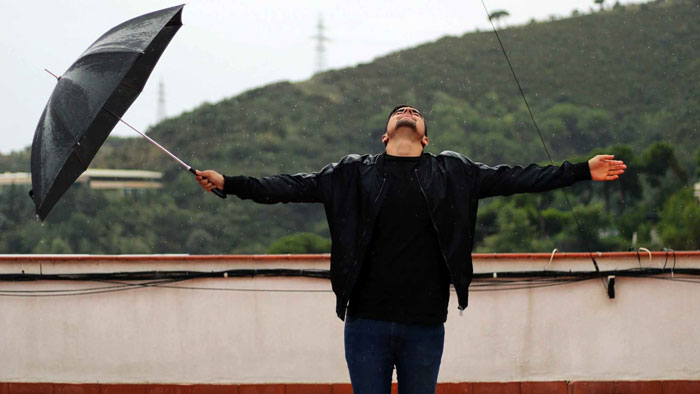
Water exposure can significantly impact the longevity and appearance of your leather jacket, given leather’s porous nature. Understanding the repercussions of moisture on leather is essential to maintain its integrity.
- Moisture Absorption: Leather, being permeable, absorbs water, which can cause the material to become wet. This wetness, if improperly dried, may result in stiffness or even rot.
- Formation of Mold and Mildew: When leather stays damp for extended periods, mold and mildew can form within its pores, creating difficult issues to remedy.
- Loss of Natural Oils: Rain exposure can strip leather of its natural oils, vital for its health. This loss leads to drying, cracking, and accelerated aging of the garment.
- Water Staining and Color Loss: Water can create unsightly stains if allowed to penetrate deeply. Besides, sustained moisture can cause the dye to leach out, causing the leather to fade or gray prematurely.
- Cracking and Discoloration: As the wet leather dries, natural oils may evaporate, leading to cracks. Discoloration is another common issue from water exposure and can detract from the jacket’s aesthetic.
Given that water-resistance varies among leather types, it’s important to recognize the specific requirements of your jacket. Full-grain leather offers more natural water resistance courtesy of its densely packed fibers, whereas types like suede and nubuck need more vigilant care through treatments such as waxing or oiling. Treating leather with conditioning and waterproofing products can help mitigate these adverse effects, protecting your investment piece from rainy conditions.
Protecting Your Leather Jacket From Rain
You can enjoy your leather jacket in rainy conditions with proper care. Focus on using leather conditioners and protective sprays to maintain its quality.
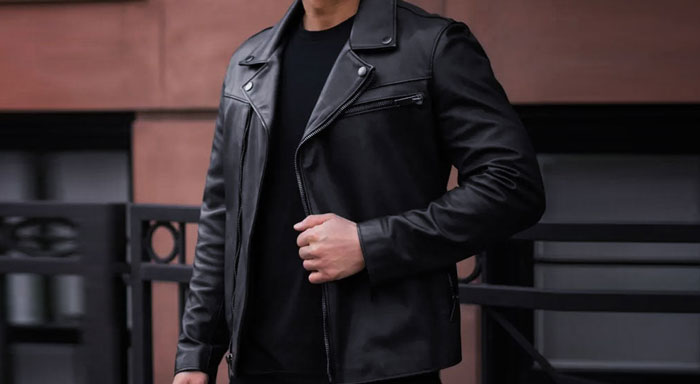
Applying Leather Conditioner
- Purpose: Use a conditioner to preserve softness and enhance water resistance. Regular application protects your jacket from moisture damage.
- Process:
- Clean the leather surface with a damp cloth.
- Apply a small amount of conditioner to a clean cloth.
- Massage it gently into the leather, focusing on creases and folds.
- Let it absorb, then remove any excess.
- Dry at room temperature, avoiding heat sources.
- Frequency: Condition leather every few months to maintain pliability and strength.
- Types: Choose sprays for suede or nubuck jackets, and wax for full-grain or top-grain leather.
- Function: They create a barrier on the jacket’s surface, repelling water effectively.
- Application Steps:
- Ensure the leather is clean and dry.
- Shake the spray bottle or scoop a small amount of wax.
- Evenly apply the product across the surface.
- Allow the jacket to dry naturally; avoid heat.
- Considerations: Wax suits rugged leather, while spray works best for sensitive types.
What to Do If Your Leather Jacket Gets Wet
Encountering wet conditions with your leather jacket requires immediate attention to prevent damage. Follow these steps under each subheading to effectively manage a wet leather jacket.
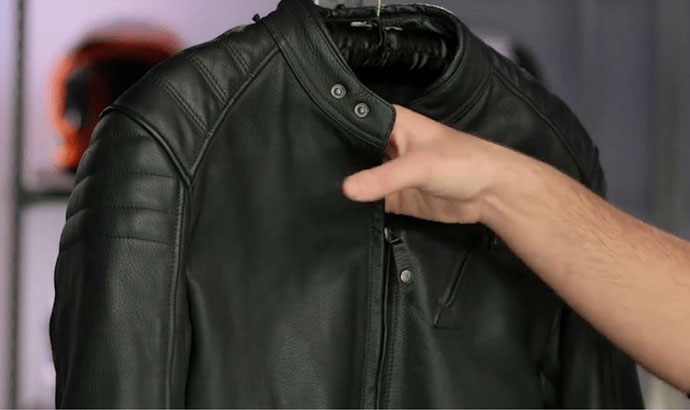
Drying Techniques
- Natural Drying: Allow the jacket to dry naturally at room temperature. Avoid heat sources like dryers or direct sunlight to prevent the leather from becoming stiff or cracking.
- Ventilation: Hang the jacket in a well-ventilated area for optimal airflow. If needed, dry it inside out to better protect the outer leather surface.
- Moisture Removal: Use a clean cloth to wipe off excess moisture immediately. This helps in preventing water from seeping into the leather and causing stains.
- Conditioning: Once dry, apply a leather conditioner to restore lost oils and maintain softness. Massage the conditioner gently into the leather and let it absorb completely.
- Inspection: Check for any water spots or discoloration. Use appropriate leather treatments to address these issues if they arise.
- Storage: Store the jacket in a cool, dry place away from direct sunlight to prevent any further damage.
These guidelines ensure that a leather jacket remains stylish and in great condition, allowing it to be enjoyed for years even in rainy environments.
Exploring Alternatives for Rainy Weather
Choosing suitable outerwear during rainy weather becomes essential when leather jackets might face potential damage. Consider these alternatives that provide style, comfort, and protection from the elements.
- Waterproof Rain Jackets: Opt for high-quality synthetic materials like Gore-Tex or polyurethane-coated fabrics, which offer breathability and complete water resistance. These jackets keep you dry without compromising on design.
- Waxed Canvas Jackets: This material combines durability with water-resistant properties. It offers a rugged look while effectively blocking rain. Regular re-waxing enhances its resistance to water and extends the jacket’s lifespan.
- Trench Coats: A stylish option made from treated cotton or wool blends provides effective water resistance with added length for extra coverage. This classic design suits both casual and formal occasions.
- Synthetic Leather: Providing inherent water resistance and available in diverse styles, synthetic leather offers a leather-like aesthetic without the maintenance requirements necessary for genuine leather.
- Ponchos and Capes: Using these can provide an easy-to-layer solution with ample protection from rain. Choose waterproof materials and consider designs with hoods or drawstrings for added convenience.
Select any of these options based on the weather conditions and your personal style preferences. While leather jackets remain timeless, switching to these alternatives helps preserve their quality during rainy spells.
Conclusion
Wearing a leather jacket in the rain is certainly doable with the right precautions. Understanding the type of leather and its water resistance can guide your choices and help maintain your jacket’s longevity. By using protective products and ensuring proper drying and conditioning, you can keep your leather looking its best. Exploring alternative outerwear options for rainy days can also protect your beloved leather pieces. With these insights, you can confidently navigate rainy weather while preserving your jacket’s iconic style and quality.
Frequently Asked Questions
How can I protect my leather jacket from rain damage?
To protect your leather jacket from rain damage, apply a water-resistant product, such as a spray or wax, before exposure to moisture. Use an umbrella for additional protection during heavy rain. Ensure proper drying and conditioning after getting wet to maintain the jacket’s appearance and durability.
What types of leather are most resistant to rain?
Chrome-tanned and full-grain leathers offer better water resistance compared to vegetable-tanned and aniline leathers. While synthetic leather is naturally water-resistant, nubuck and suede require extra care. Regular conditioning can enhance resistance for all leather types.
How should I dry my leather jacket after it gets wet?
Gently remove excess water with a soft cloth, hang the jacket to air dry in a well-ventilated area, and avoid direct heat sources. Once dry, apply a leather conditioner to restore moisture and flexibility to prevent stiffness and cracking.
What are some fashionable alternatives to leather jackets for rainy weather?
Consider waterproof rain jackets made from breathable synthetics, waxed canvas jackets for rugged style, or trench coats for a stylish look. Synthetic leather jackets offer low-maintenance aesthetics, and ponchos or capes provide easy layering options for wet conditions.
Can rain permanently damage a leather jacket?
Yes, prolonged exposure to moisture can cause permanent damage to leather jackets, leading to stiffness, rot, and mold growth. It can strip natural oils, causing drying and cracking, and create stains or discoloration, detracting from the jacket’s aesthetic.
How frequently should I condition my leather jacket?
Condition your leather jacket every 3-6 months or more often if the jacket is frequently exposed to moisture or harsh weather. Regular conditioning helps retain softness, prevent dryness, and prolong the jacket’s lifespan by replenishing essential oils.

